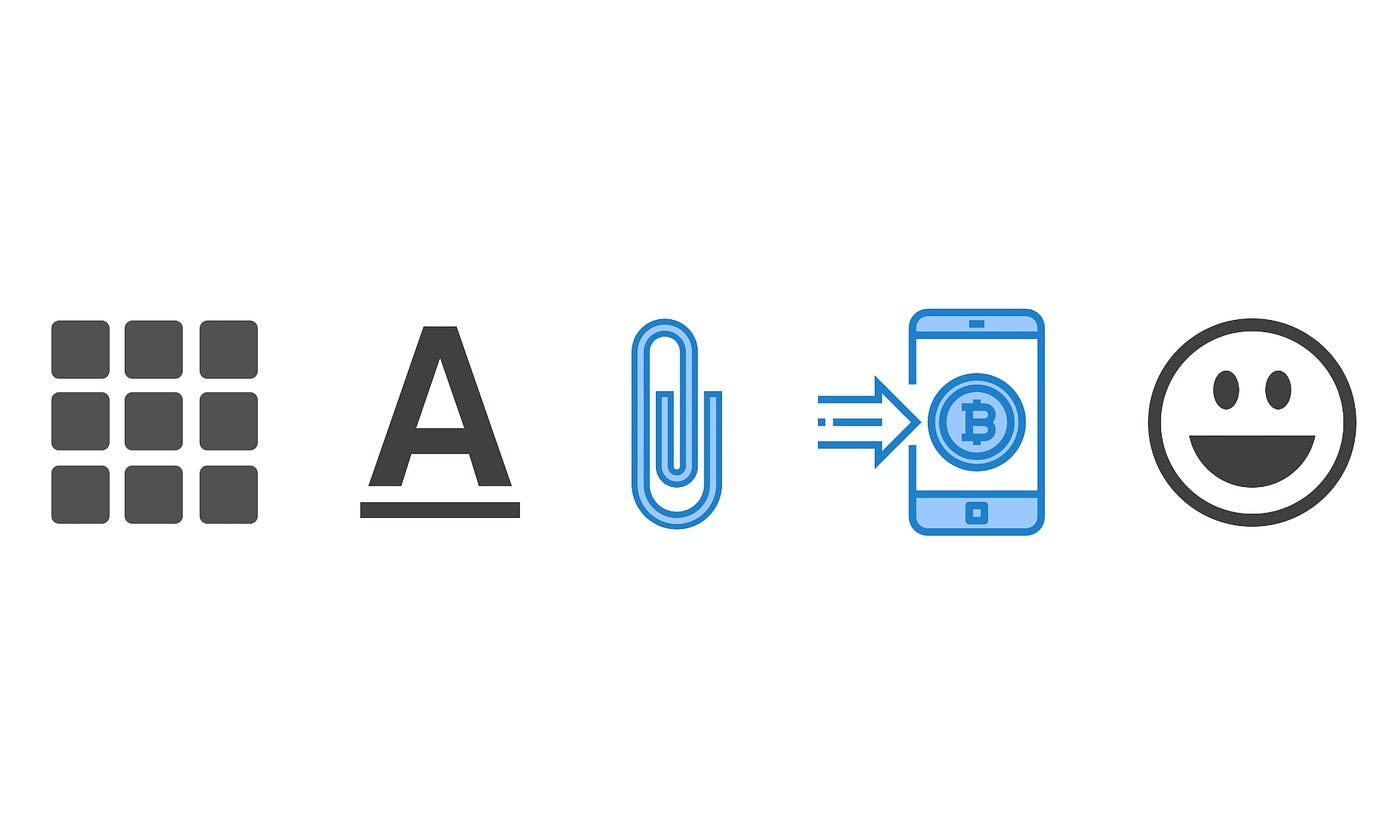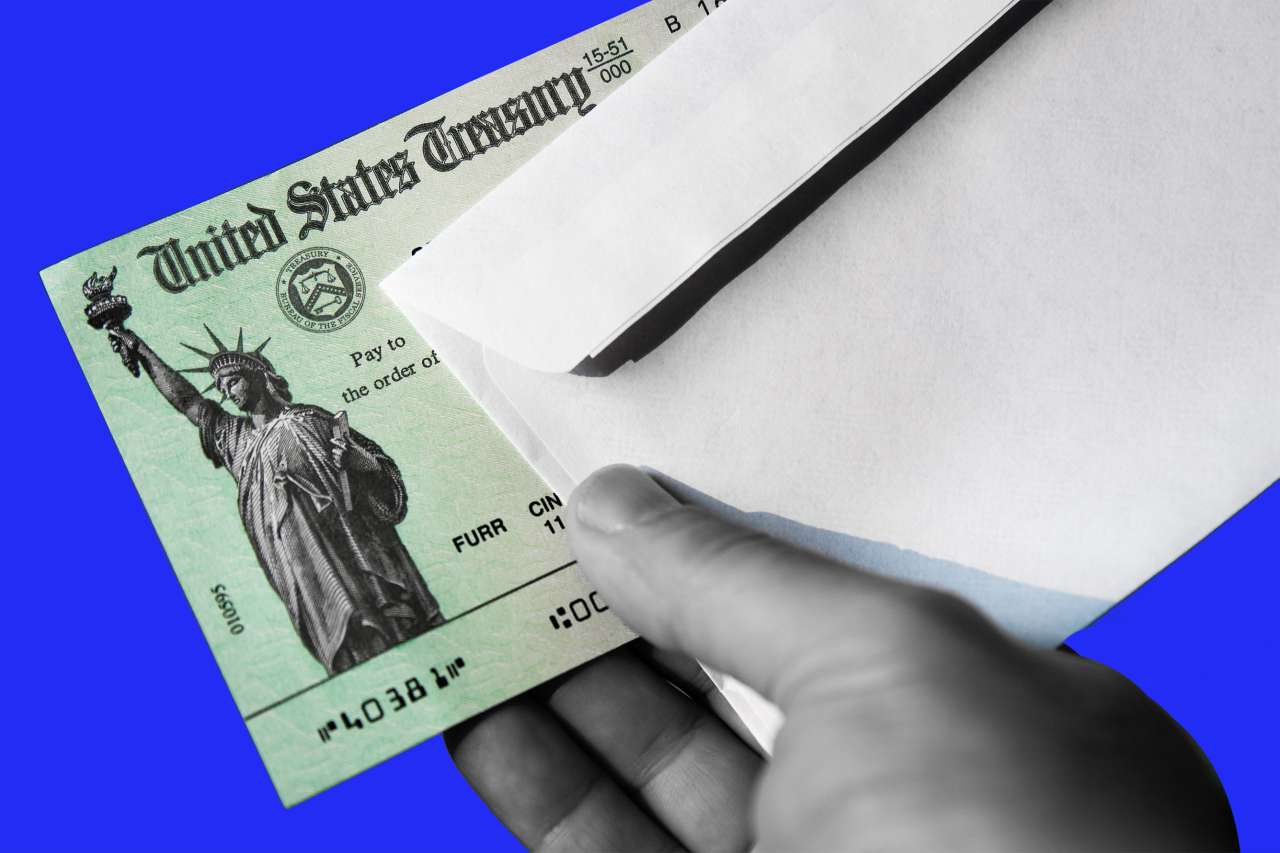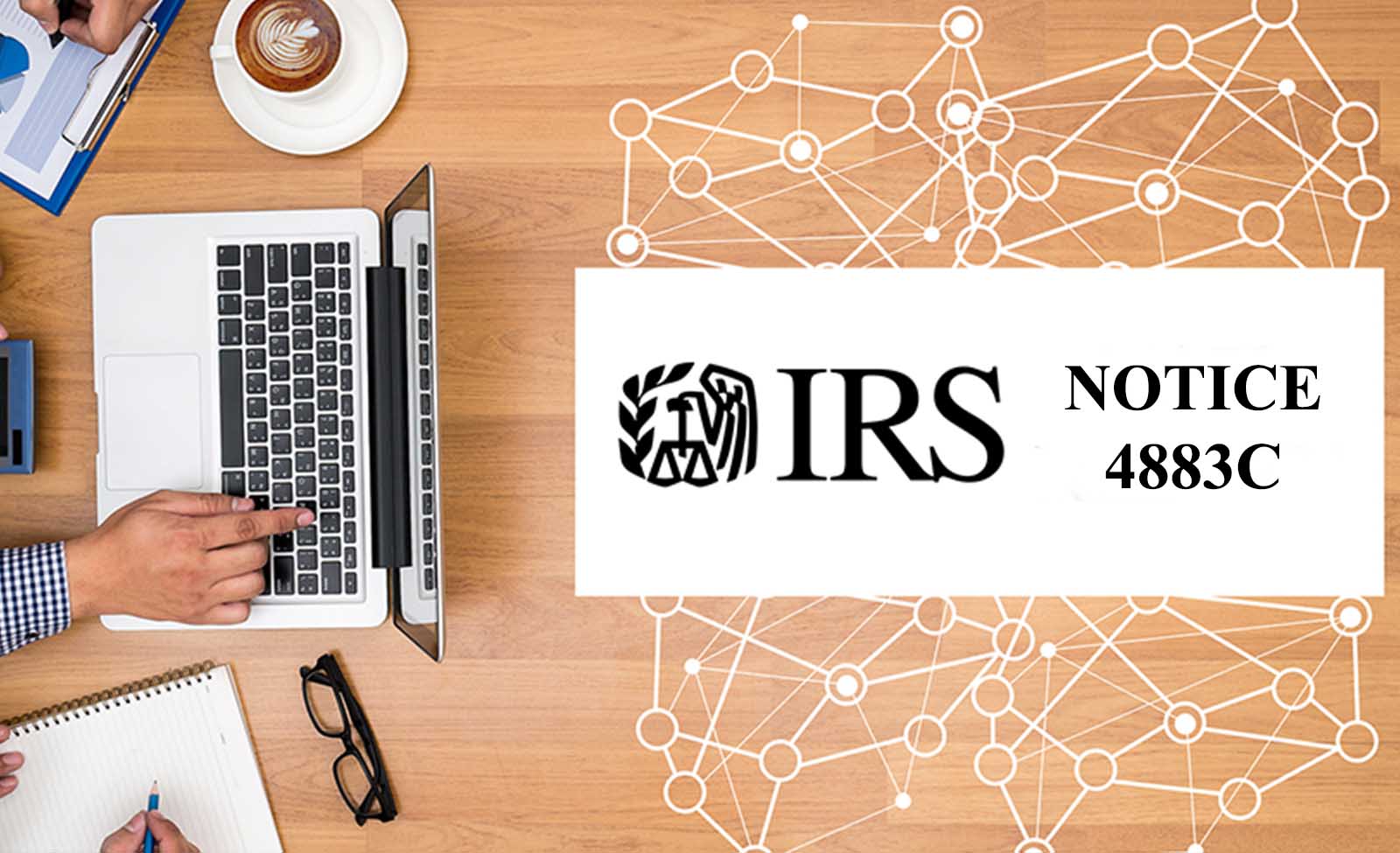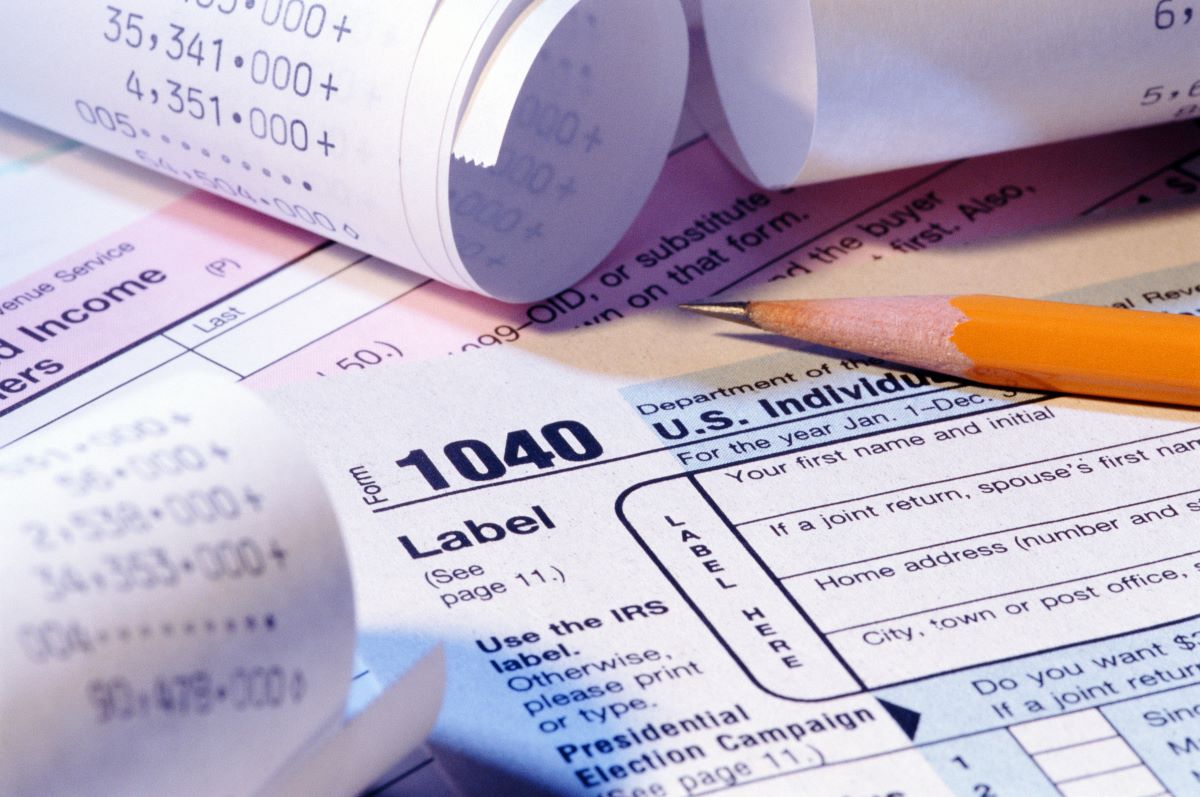Home>Finance>Why Did The IRS Take Money From My Bank Account?


Finance
Why Did The IRS Take Money From My Bank Account?
Published: November 1, 2023
Discover why the IRS took money from your bank account and get expert insights on finance matters to avoid such situations in the future.
(Many of the links in this article redirect to a specific reviewed product. Your purchase of these products through affiliate links helps to generate commission for LiveWell, at no extra cost. Learn more)
Table of Contents
- Introduction
- Understanding IRS Banking Levy
- Reasons for IRS Taking Money from Bank Account
- Unpaid Taxes or Tax Debt
- Failure to File Tax Returns
- Federal or State Tax Liens
- Notice of Intent to Levy
- IRS Collection Actions
- Bank Levy Process
- Legal Rights and Options for Taxpayers
- How to Prevent IRS Bank Levies
- Resolving an IRS Bank Levy
- Conclusion
Introduction
In today’s fast-paced and financially demanding world, it can be quite distressing to discover that the Internal Revenue Service (IRS) has taken money from your bank account. This unexpected action can leave you confused, frustrated, and anxious about your financial stability. However, understanding why the IRS has made this decision is essential in order to address the issue effectively.
An IRS bank levy, also known as a bank account seizure, is a legal action taken by the IRS to collect unpaid taxes or tax debt from individuals or businesses. This levy allows the IRS to seize funds directly from your bank account to satisfy your outstanding tax obligations. While this process can be unsettling, it is important to remain calm and informed throughout the procedure.
In this article, we will delve into the reasons why the IRS may have taken money from your bank account, explore the bank levy process, and provide valuable insights into your legal rights and options as a taxpayer. Additionally, we will discuss preventive measures and ways to resolve an IRS bank levy, helping you navigate through this challenging situation.
It’s crucial to remember that each individual case may have its own unique circumstances, and consulting with a tax professional or seeking legal advice is advisable for personalized guidance. However, by gaining a comprehensive understanding of the IRS bank levy process and your rights as a taxpayer, you will be better equipped to handle any financial challenges that may arise.
Understanding IRS Banking Levy
Before delving into the reasons behind the IRS taking money from your bank account, it’s important to understand what an IRS banking levy entails. A bank levy is a legal action used by the IRS to collect unpaid taxes or tax debt from taxpayers.
When the IRS initiates a bank levy, it sends a notification to your bank, instructing them to freeze a portion or the entirety of the funds present in your account. This freeze typically lasts for 21 days, during which time you have the opportunity to resolve the outstanding tax debt and prevent further action.
It is crucial to note that the IRS must follow specific guidelines and procedures before initiating a bank levy. They must send you a Notice and Demand for Payment, stating the amount owed and giving you a deadline to respond. If you fail to respond to this notice or reach an agreement with the IRS, they can proceed with the bank levy.
Once your bank receives the levy notice from the IRS, they are obligated to freeze the funds in your account up to the amount specified in the levy. This includes any savings, checking, or investment accounts you may have with that bank. The IRS does not require a court order to initiate a bank levy, making it a relatively quick and efficient method for them to collect unpaid taxes.
It’s important to note that a bank levy is not a one-time event; the IRS can levy your bank account multiple times in an attempt to satisfy the outstanding tax debt. Therefore, it is crucial to address the underlying issue promptly to prevent further levies and financial hardship.
Now that we have a basic understanding of what an IRS bank levy is, let’s explore the potential reasons behind the IRS taking money from your bank account.
Reasons for IRS Taking Money from Bank Account
There are several reasons why the IRS may decide to take money from your bank account. Understanding these reasons can help you determine the underlying issue and take appropriate action to resolve it. Here are some common reasons for the IRS taking money from your bank account:
- Unpaid Taxes or Tax Debt: The most common reason for an IRS bank levy is unpaid taxes or tax debt. If you owe back taxes, the IRS has the authority to initiate a bank levy to collect the outstanding amount. This can include federal income taxes, payroll taxes, self-employment taxes, or any other tax liability that you have failed to settle.
- Failure to File Tax Returns: Failing to file your tax returns is another common trigger for the IRS to take money from your bank account. If you haven’t filed your taxes for several years or have consistently disregarded your filing obligations, the IRS may resort to a bank levy as a means to compel compliance.
- Federal or State Tax Liens: A tax lien is a legal claim against your property or assets to secure payment of your tax debt. If the IRS has filed a federal tax lien or if your state tax agency has pursued a tax lien against you, they can proceed with a bank levy to collect the owed amount.
- Notice of Intent to Levy: Before initiating a bank levy, the IRS is required to send you a Notice of Intent to Levy. This notice serves as a warning sign that the IRS intends to take enforcement action, including a potential bank levy, if you fail to respond or make arrangements to resolve your tax debt.
- IRS Collection Actions: If you have been unresponsive to previous collection efforts by the IRS, such as notices and phone calls, they may resort to more severe measures like a bank levy. Persistent non-compliance and failure to address your tax debt can lead the IRS to take more aggressive actions to collect what is owed.
If the IRS has taken money from your bank account, it is vital to assess the underlying reason and take appropriate steps to address the issue. Ignoring the problem will only lead to further financial hardship and potential collection actions from the IRS.
In the following sections, we will delve into the bank levy process and discuss your legal rights and options as a taxpayer when facing an IRS bank levy. Understanding the process and available solutions will enable you to navigate through this challenging situation effectively.
Unpaid Taxes or Tax Debt
One of the primary reasons why the IRS may take money from your bank account is unpaid taxes or tax debt. If you owe back taxes, the IRS has the authority to initiate a bank levy to collect the outstanding amount.
When it comes to unpaid taxes, it’s essential to understand that the IRS expects individuals and businesses to fulfill their tax obligations by paying the correct amount of tax on time. Failure to do so can result in penalties, interest charges, and potential collection actions.
If you have unpaid taxes or a tax debt, it’s crucial to take immediate action to address the issue. Here are some steps you can take:
- Review Your Tax Liability: Start by reviewing your tax liability and ensuring that it is accurate. Check your tax returns, deductions, credits, and any other factors that could affect your tax liability. If you believe there are errors, consult a tax professional to help you rectify any mistakes.
- Calculate How Much You Owe: Determine the exact amount of your unpaid taxes or tax debt, including any penalties and interest. You can use information from IRS notices, account transcripts, or consult a tax professional to help you calculate the outstanding balance.
- Explore Payment Options: Once you know the amount you owe, explore the available payment options. The IRS offers various payment methods, including full payment, installment agreements, or even an offer in compromise for qualifying individuals. Consider your financial situation and choose the payment option that best suits your needs.
- Communicate with the IRS: It’s crucial to stay in communication with the IRS regarding your unpaid taxes or tax debt. Contact the IRS directly to discuss your situation and inquire about possible payment arrangements. Ignoring the issue will only result in increased penalties and more severe collection actions.
- Seek Professional Assistance: If you’re unsure about how to handle your unpaid taxes or tax debt, consider seeking assistance from a tax professional or an enrolled agent. These professionals can provide guidance, negotiate with the IRS on your behalf, and help you find the best solution for your specific situation.
By taking proactive steps to address unpaid taxes or tax debt, you can minimize the risk of an IRS bank levy and work towards resolving your tax issues. Remember that each taxpayer’s situation is unique, and professional advice can provide valuable insights tailored to your circumstances.
In the next section, we will discuss another common reason for the IRS taking money from your bank account – failure to file tax returns.
Failure to File Tax Returns
Another common reason why the IRS may take money from your bank account is the failure to file tax returns. As a taxpayer, it is your responsibility to file your tax returns accurately and on time. Failing to do so can have serious consequences, including the initiation of an IRS bank levy.
When you fail to file your tax returns, the IRS is left with incomplete information about your income and tax liability. This can raise red flags and lead to further scrutiny by the IRS. If you have unfiled tax returns for multiple years or have consistently disregarded your filing obligations, the IRS may resort to more aggressive collection actions, such as a bank levy.
If you find yourself in a situation where you have failed to file your tax returns, it’s important to take immediate action to rectify the issue. Here are some steps you can take:
- Gather Your Financial Documents: Start by gathering all the necessary financial documents needed to file your tax returns. This includes income statements, expense records, and any other relevant information. Organizing your financial documents will make it easier to accurately file your tax returns.
- File Your Tax Returns: Proceed to file your tax returns for all the unfiled years. If you are unsure about how to go about this process, seek assistance from a tax professional or use tax software to ensure your returns are filed correctly.
- Communicate with the IRS: Once you have filed your tax returns, reach out to the IRS to inform them about your recent filings. This will demonstrate your willingness to comply and resolve any outstanding filing issues. Providing documentation or proof of your filings can help alleviate concerns regarding your compliance.
- Address Any Tax Due: If your tax returns show that you owe additional taxes, it’s important to address and pay these amounts as soon as possible. Explore the available payment options, such as installment agreements or offers in compromise, to help you settle your tax liabilities effectively.
- Seek Professional Guidance: If you feel overwhelmed or uncertain about filing your unfiled tax returns, consider seeking professional guidance from a tax professional. They can assist you with the filing process, provide valuable insights on how to address any outstanding tax liabilities, and help you navigate through potential IRS collection actions.
Addressing your failure to file tax returns promptly can help prevent further IRS actions, including bank levies. By demonstrating your commitment to complying with your tax obligations and taking the necessary steps to rectify any filing issues, you can work towards resolving the situation and avoiding additional penalties and interest charges.
In the next section, we will discuss another potential reason for the IRS taking money from your bank account – federal or state tax liens.
Federal or State Tax Liens
A tax lien is a legal claim imposed by the government on your property or assets to secure the payment of your tax debt. If the IRS or your state tax agency has filed a tax lien against you, it can lead to the IRS taking money from your bank account through a bank levy.
A federal tax lien is filed by the IRS when you have unpaid federal taxes. This lien gives the IRS a legal right to claim your property or assets to satisfy your tax debt. Similarly, your state tax agency can file a state tax lien for unpaid state taxes.
When a tax lien is in place, the IRS or state tax agency can proceed with enforcement actions, such as bank levies, to collect the owed amount. Here’s what you need to know about federal and state tax liens:
- Federal Tax Liens: A federal tax lien is a claim against all your property, including real estate, personal property, and financial assets. It serves as a public notice to creditors that the government has a legal right to your property. Once a federal tax lien is filed, it can affect your credit score, making it difficult to obtain loans or credit.
- State Tax Liens: State tax liens are similar to federal tax liens but apply to unpaid state taxes. Each state has its own rules and regulations regarding state tax liens. These liens also serve as public notices of the government’s claim on your property and can impact your creditworthiness.
- Effect on Bank Accounts: When the IRS or state tax agency files a tax lien against you, they have the authority to initiate a bank levy to collect the unpaid tax debt. This means they can freeze your bank account and seize funds to satisfy the tax liability.
- Resolving Tax Liens: Resolving tax liens requires addressing the underlying tax debt. To release a federal tax lien, you can pay the debt in full, enter into an installment agreement, or potentially qualify for an offer in compromise. Similarly, resolving state tax liens involves paying the outstanding tax debt and fulfilling any state-specific requirements.
- Seek Professional Advice: Dealing with federal or state tax liens can be complex. It is advisable to consult with a tax professional or an enrolled agent who can guide you through the process, help negotiate with the IRS or state tax agency, and find the best solution for your specific situation.
If you have federal or state tax liens in place, it’s important to take immediate action to address your tax debt. By doing so, you can work towards releasing the liens and preventing further collection actions, such as bank levies. Seeking professional assistance can provide valuable insights and ensure you take the appropriate steps to resolve your tax lien issues.
Next, we will discuss the importance of being aware of the Notice of Intent to Levy and the IRS’s collection actions.
Notice of Intent to Levy
Before the IRS initiates a bank levy to collect unpaid taxes or tax debt, they are required by law to send you a Notice of Intent to Levy. This notice serves as a warning sign that the IRS intends to take enforcement action if you fail to respond or make arrangements to resolve your tax debt.
Receiving a Notice of Intent to Levy can be alarming, but it is a crucial step in the collection process where the IRS is legally required to notify you of their intent to take further actions. Here’s what you need to know about this notice:
- Notification: The Notice of Intent to Levy is typically sent by certified mail to your last known address. It informs you of the outstanding tax debt and provides a deadline by which you must respond to prevent further collection actions.
- Response Time: Upon receiving the notice, you have 30 days to respond. During this period, it is essential to take action to address the underlying tax debt and avoid an IRS bank levy.
- Options to Consider: When you receive a Notice of Intent to Levy, you have several options to explore. You can pay the outstanding tax debt in full, enter into an installment agreement, or consider an offer in compromise if you meet the eligibility criteria. It’s crucial to consult with a tax professional to determine the best course of action based on your financial situation.
- Collection Actions: If you fail to respond to the Notice of Intent to Levy or make arrangements to resolve your tax debt within the specified timeframe, the IRS can proceed with collection actions, including a bank levy. This can result in the freezing and seizure of funds from your bank account to satisfy the outstanding tax liability.
- Appealing the Notice: If you believe there are errors in the Notice of Intent to Levy or if you need more time to resolve your tax debt, you have the right to appeal the IRS’s decision. This involves submitting a formal request for a Collection Due Process (CDP) hearing to present your case to an independent IRS appeals officer.
It is crucial to take immediate action upon receiving a Notice of Intent to Levy. Ignoring the notice or failing to respond can lead to severe consequences, such as an IRS bank levy. By understanding your options, consulting with a tax professional, and timely addressing the outstanding tax debt, you can navigate through this stage of the collection process and work towards resolving your tax issues.
In the next section, we will delve into the bank levy process and provide insights into your legal rights and options as a taxpayer.
IRS Collection Actions
When it comes to collecting unpaid taxes or tax debt, the IRS has various collection actions at its disposal. Understanding these actions can help you navigate through the process and make informed decisions regarding your tax debt. Here are some key IRS collection actions to be aware of:
- Notice and Demand for Payment: The first step in the collection process is when the IRS sends you a Notice and Demand for Payment. This notice specifies the amount of tax debt you owe and provides a deadline for payment or response.
- Notices and Correspondence: If you fail to respond to the initial Notice and Demand for Payment, the IRS will send subsequent notices and correspondence to remind you of your outstanding tax debt. These notices serve as a gentle push to take action and address the issue promptly.
- Notice of Intent to Levy: If the IRS determines that you have not made satisfactory progress in resolving your tax debt, they will send you a Notice of Intent to Levy. This notice informs you of their intent to levy your assets, including a potential bank levy, if you do not respond within the specified timeframe.
- Bank Levy: A bank levy is one of the most impactful collection actions the IRS can take. If you ignore the Notice of Intent to Levy or fail to make arrangements to resolve your tax debt, the IRS can freeze and seize funds from your bank account to satisfy the outstanding tax liability.
- Wage Garnishment: In addition to a bank levy, the IRS can also initiate wage garnishment. This involves contacting your employer and legally requiring them to withhold a portion of your wages to pay towards your outstanding tax debt.
- Asset Seizure: In extreme cases of non-compliance or significant tax debt, the IRS has the authority to seize and sell your assets to satisfy your tax liabilities. This can include property, vehicles, and other valuable assets.
- Credit Impact: It’s important to note that unpaid taxes or tax debt can negatively impact your credit score. The IRS can file a tax lien, which becomes a matter of public record and can affect your creditworthiness and ability to obtain loans or credit in the future.
Understanding IRS collection actions is crucial for proactive tax debt management. By taking prompt action, seeking professional assistance, and exploring payment options, you can steer clear of more severe collection actions, such as bank levies and asset seizures.
In the next section, we will delve into the bank levy process and discuss your legal rights and options as a taxpayer when facing an IRS bank levy.
Bank Levy Process
The bank levy process is a legal action used by the IRS to collect unpaid taxes or tax debt directly from your bank account. Understanding this process can help you navigate through the situation and take appropriate action. Here’s an overview of the bank levy process:
- Notice of Intent to Levy: As mentioned earlier, the first step in the bank levy process is receiving a Notice of Intent to Levy. This notice serves as a warning sign that the IRS intends to take enforcement action, including a potential bank levy, if you fail to respond or make arrangements to resolve your tax debt within the specified timeframe.
- Bank Notification: After sending the Notice of Intent to Levy, the IRS will notify your bank of their intent to levy your account. While the bank is not required to notify you immediately, they will typically do so once they receive the levy notice from the IRS.
- Account Freeze: Upon receiving the levy notice from the IRS, your bank is legally obligated to freeze the funds in your account up to the amount specified in the levy. This freeze prevents you from accessing or withdrawing the funds in your account during this period.
- Hold Period: The bank will hold the frozen funds for 21 days, giving you an opportunity to resolve the outstanding tax debt and prevent further collection actions. It’s important to act promptly during this hold period to prevent the funds from being seized permanently.
- Funds Seizure: If you fail to resolve the tax debt within the hold period, the bank is required to send the frozen funds to the IRS. The IRS will then apply those funds towards your outstanding tax liability.
- Bank Levy Fees: It’s important to note that the bank may charge fees for processing the levy. These fees are typically deducted from the funds seized and can further impact your financial situation.
- Release of Levy: After the bank levy, it is possible to have the levy released. This can happen if you reach an agreement with the IRS to resolve the outstanding tax debt, such as paying in full or entering into an installment agreement. The release of levy will allow you to regain access to your bank account.
It’s crucial to remember that communication with the IRS and taking prompt action are key during the bank levy process. By seeking professional assistance, exploring payment options, and addressing the underlying tax debt, you can work towards preventing or resolving a bank levy.
In the next section, we will discuss your legal rights and options as a taxpayer when facing an IRS bank levy.
Legal Rights and Options for Taxpayers
When facing an IRS bank levy or any other collection action, it’s important to understand your legal rights and explore the available options to address your tax debt. Here are some essential legal rights and options for taxpayers:
- Right to Due Process: As a taxpayer, you have the right to due process. This means you have the right to be informed, receive proper notice, and have an opportunity to be heard before the IRS takes any collection actions, including a bank levy.
- Appeal Rights: If you disagree with any IRS action, including a bank levy, you have the right to appeal. This involves requesting a Collection Due Process (CDP) hearing, where you can present your case to an independent IRS appeals officer.
- Payment Options: You have various payment options available to address your tax debt. These options include paying the debt in full, entering into an installment agreement, or potentially qualifying for an offer in compromise, where you settle for less than the total amount owed.
- Financial Hardship Considerations: If paying the tax debt would result in financial hardship, you may be eligible for alternatives such as Currently Not Collectible status or an adjustment in your monthly payment amount based on your ability to pay.
- Professional Assistance: It’s highly recommended to seek professional assistance when dealing with an IRS bank levy. Tax professionals, such as tax attorneys or enrolled agents, have the expertise to navigate the complexities of the tax system, negotiate with the IRS on your behalf, and help you find the best resolution for your situation.
- Compliance with Tax Obligations: To prevent or resolve an IRS bank levy, it’s important to remain compliant with your tax obligations moving forward. Stay up to date with your tax filings, make timely payments, and address any future tax liabilities promptly.
- Documentation and Record-keeping: Keep proper documentation and records of your tax filings, payments, and communication with the IRS. This can be valuable evidence in case of disputes or to support your case during an appeal or negotiation process.
Understanding your legal rights and exploring the available options is crucial in finding a resolution to your tax debt and preventing further collection actions, such as an IRS bank levy. By exercising your rights, seeking professional assistance, and staying compliant with your tax obligations, you can navigate through this challenging situation with greater confidence.
In the next section, we will discuss preventive measures and how to avoid an IRS bank levy.
How to Prevent IRS Bank Levies
Preventing an IRS bank levy is essential for your financial stability and peace of mind. By taking proactive measures, you can reduce the risk of facing a bank levy and ensure that you remain in good standing with the IRS. Here are some strategies to help prevent IRS bank levies:
- Timely Filing and Payment: Stay up to date with your tax filings and make sure to pay your taxes on time. Filing your tax returns accurately and paying your tax liabilities promptly will reduce the likelihood of accumulating a significant tax debt that may lead to a bank levy.
- Communicate with the IRS: If you’re facing financial difficulties or anticipate difficulty in paying your taxes, it’s crucial to communicate with the IRS. Reach out to them, explain your situation, and explore payment options or alternative arrangements that can help you fulfill your tax obligations without resorting to a bank levy.
- Negotiate Installment Agreements: If you cannot pay your tax debt in full, consider negotiating an installment agreement with the IRS. This allows you to make monthly payments over an extended period to settle your tax debt. By fulfilling your installment agreement, you demonstrate your commitment to resolving your tax debt and reduce the risk of a bank levy.
- Explore Offer in Compromise: For those experiencing significant financial hardship, an offer in compromise may be a viable option. This program allows you to settle your tax debt for less than the total amount owed, based on your ability to pay. However, qualifying for an offer in compromise can be challenging, and it’s advisable to seek professional guidance.
- Stay Informed and Seek Professional Advice: Tax laws and regulations can be complex and subject to change. Stay informed about your rights, obligations, and available options. Seeking guidance from a tax professional or enrolled agent can provide valuable insights tailored to your specific situation and help you make informed decisions regarding your tax debt.
- Respond to Notices and Correspondence: The IRS sends various notices and correspondence to taxpayers regarding their tax debt. It’s crucial to respond to these notices promptly and provide any requested information. Ignoring or disregarding notices can escalate the situation and increase the risk of a bank levy.
- Maintain Proper Documentation: Keep accurate and organized records of your tax filings, payments, and any communication with the IRS. This documentation will serve as evidence and support your case in case of disputes or audits.
By being proactive, communicating with the IRS, and seeking professional assistance when needed, you can prevent an IRS bank levy and address your tax debt in a timely and effective manner. Remember, staying compliant and taking timely action are crucial in maintaining a positive relationship with the IRS.
Next, let’s discuss how to resolve an IRS bank levy if you find yourself in that situation.
Resolving an IRS Bank Levy
If you find yourself facing an IRS bank levy, it’s essential to take immediate action to resolve the situation and regain control of your finances. While it can be a stressful and challenging experience, there are several steps you can take to address and resolve an IRS bank levy:
- Contact the IRS: Reach out to the IRS immediately upon discovering the bank levy. Explain your situation, inquire about the specifics of the levy, and gather information on the outstanding tax debt.
- Assess Your Financial Situation: Evaluate your financial circumstances to determine your ability to pay off the tax debt in full or negotiate a payment arrangement. Consider your income, expenses, and assets to come up with a viable solution.
- Request a Release of Levy: If you can demonstrate that the bank levy is causing undue financial hardship, you may be able to request a release of the levy. Provide supporting documentation to the IRS to support your case.
- Explore Installment Agreements: If paying the tax debt in full is not feasible, consider negotiating an installment agreement with the IRS. This allows you to make monthly payments over time to settle your tax debt.
- Consider an Offer in Compromise: In some cases, you may qualify for an offer in compromise, which allows you to settle your tax debt for less than the total amount owed. However, keep in mind that qualifying for an offer in compromise can be challenging, and professional assistance is recommended.
- Seek Professional Assistance: Enlist the help of a tax professional or enrolled agent who has experience in dealing with IRS bank levies. They can guide you through the negotiation process, advocate on your behalf, and help you find the most suitable resolution for your specific situation.
- Release of Levy: Once you have reached an agreement with the IRS, they will release the bank levy. This will enable you to regain access to your frozen funds and restore normalcy to your financial situation.
- Prevent Future Levies: Take preventive measures to ensure that you remain compliant with your tax obligations moving forward. File your tax returns on time, pay your taxes promptly, and seek professional advice to maintain a healthy relationship with the IRS.
Resolving an IRS bank levy requires proactive communication, a thorough assessment of your financial situation, and consideration of available options. It’s crucial to act swiftly, seek professional guidance when needed, and remain committed to resolving your tax debt.
Remember, every taxpayer’s situation is unique, and the resolution process may vary. Seeking professional assistance will provide personalized advice and increase the likelihood of reaching a favorable outcome.
In the next section, we will wrap up our discussion and conclude our exploration of IRS bank levies.
Conclusion
Dealing with an IRS bank levy can be a distressing experience, but it is essential to remain calm and take appropriate action to resolve the situation. Throughout this article, we have explored the reasons behind the IRS taking money from your bank account, including unpaid taxes or tax debt, failure to file tax returns, and federal or state tax liens. We have also discussed the bank levy process, your legal rights and options as a taxpayer, and strategies to prevent and resolve an IRS bank levy.
When facing an IRS bank levy, it is crucial to understand your rights, communicate with the IRS, and explore the available options to address your tax debt. Seeking professional assistance can provide valuable insights and expert guidance tailored to your unique situation, helping you navigate through the complexities of the tax system.
Prevention is key in avoiding an IRS bank levy. By staying compliant with your tax obligations, communicating with the IRS, and promptly addressing any tax debt, you can reduce the likelihood of facing collection actions, such as a bank levy.
Remember, each taxpayer’s situation is unique, and seeking professional advice is highly recommended. Tax professionals are equipped with the knowledge and expertise to guide you through the process and ensure the best resolution for your specific circumstances.
By staying proactive, informed, and proactive in addressing your tax debt, you can regain control of your finances and work towards a brighter financial future. Remember that resolving tax issues takes time and patience, but with the right approach and professional assistance, you can overcome the challenges and achieve a positive outcome.
Remember, the information presented in this article is for informational purposes only and should not be considered as legal or financial advice. Consult with a tax professional or enrolled agent for personalized guidance and assistance with your specific tax situation.














